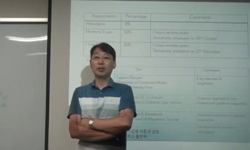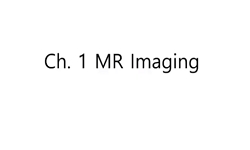Background: White-matter abnormalities (WMAs) are frequently encountered on MRI conducted for the diagnosis of headache. Although many studies have suggested an association between migraine and stroke or WMAs, no definite conclusions can be drawn from...
http://chineseinput.net/에서 pinyin(병음)방식으로 중국어를 변환할 수 있습니다.
변환된 중국어를 복사하여 사용하시면 됩니다.
- 中文 을 입력하시려면 zhongwen을 입력하시고 space를누르시면됩니다.
- 北京 을 입력하시려면 beijing을 입력하시고 space를 누르시면 됩니다.

뇌혈관위험인자가 없는 젊은 두통 환자의 백색질 이상: 편두통과 긴장형두통 = White Matter Abnormalities of Migraine and Tension Type Headache in Young Patients Without Vascular Risk Factors
한글로보기https://www.riss.kr/link?id=A101608262
- 저자
- 발행기관
- 학술지명
- 권호사항
-
발행연도
2009
-
작성언어
Korean
- 주제어
-
등재정보
KCI등재
-
자료형태
학술저널
- 발행기관 URL
-
수록면
251-256(6쪽)
-
KCI 피인용횟수
0
- 제공처
-
0
상세조회 -
0
다운로드
부가정보
다국어 초록 (Multilingual Abstract)
Background: White-matter abnormalities (WMAs) are frequently encountered on MRI conducted for the diagnosis of
headache. Although many studies have suggested an association between migraine and stroke or WMAs, no definite
conclusions can be drawn from these data because of confounding factors. The purpose of our study was thus to
determine whether the incidence and location of WMAs in migraine differ from those in tension-type headache.
Methods: The MRI findings of 180 patients (130 with migraine and 50 with tension-type headache) under 45 years of age
without vascular risk factors were reviewed. MRI findings were reviewed with respect to focal white-matter
hyperintensities on fluid-attenuated inversion recovery. The frequency, location, and volume of the abnormalities were
measured.
Results: WMAs were observed in 24% of patients with migraine and 28% of those with tension-type headache (p=0.71).
The number and volume of abnormalities in both groups were not different. WMAs were most frequently located in the
subcortical area in both groups. The age of patients with WMAs was older than patients without abnormalities (36.4±7.2
vs 29.6±9.2, mean±SD; p<0.01). There was a positive correlation between patient age and the volume of WMAs (p=0.04).
In the migraine group, WMAs were seen in 21% of patients with migraine without aura and in 60% of those with
migraine with aura (p=0.01).
Conclusions: Although the characteristics of WMAs were not different between patients with migraine and those with
tension-type headache, the incidence of WMAs was significantly higher in migraine with aura. This may be extrapolated
to an increased risk for stroke in patients with migraine with aura, but not in those with migraine without aura.
다국어 초록 (Multilingual Abstract)
Background: White-matter abnormalities (WMAs) are frequently encountered on MRI conducted for the diagnosis of headache. Although many studies have suggested an association between migraine and stroke or WMAs, no definite conclusions can be drawn fr...
Background: White-matter abnormalities (WMAs) are frequently encountered on MRI conducted for the diagnosis of
headache. Although many studies have suggested an association between migraine and stroke or WMAs, no definite
conclusions can be drawn from these data because of confounding factors. The purpose of our study was thus to
determine whether the incidence and location of WMAs in migraine differ from those in tension-type headache.
Methods: The MRI findings of 180 patients (130 with migraine and 50 with tension-type headache) under 45 years of age
without vascular risk factors were reviewed. MRI findings were reviewed with respect to focal white-matter
hyperintensities on fluid-attenuated inversion recovery. The frequency, location, and volume of the abnormalities were
measured.
Results: WMAs were observed in 24% of patients with migraine and 28% of those with tension-type headache (p=0.71).
The number and volume of abnormalities in both groups were not different. WMAs were most frequently located in the
subcortical area in both groups. The age of patients with WMAs was older than patients without abnormalities (36.4±7.2
vs 29.6±9.2, mean±SD; p<0.01). There was a positive correlation between patient age and the volume of WMAs (p=0.04).
In the migraine group, WMAs were seen in 21% of patients with migraine without aura and in 60% of those with
migraine with aura (p=0.01).
Conclusions: Although the characteristics of WMAs were not different between patients with migraine and those with
tension-type headache, the incidence of WMAs was significantly higher in migraine with aura. This may be extrapolated
to an increased risk for stroke in patients with migraine with aura, but not in those with migraine without aura.
참고문헌 (Reference)
1 Sachdev P, "White matter hyperintensities in midadult life" 21 : 268-274, 2008
2 Wen W, "The topography of white matter hyperintensities on brain MRI in healthy 60- to 64-year-old individuals" 22 : 144-154, 2004
3 Fazekas F, "The prevalence of cerebral damage varies with migraine type: A MRI study" 32 : 287-291, 1992
4 DeCarli C, "The effect of white matter hyperintensity volume on brain structure, cognitive performance, and cerebral metabolism of glucose in 51 healthy adults" 45 : 2077-2084, 1995
5 Vermeer SE, "Silent brain infarcts and white matter lesions increase stroke risk in the general population" 34 : 1126-1129, 203
6 Lee TK, "Prevalence of migraine in Korean adults: A national survey" 1 : 57-66, 2000
7 Rundek T, "Patent foramen ovale and migraine: a cross-sectional study from the Northern Manhattan Study (NOMAS)" 118 : 1419-1424, 2008
8 Swartz RH, "Migraine is associated with magnetic resonance imaging white matter abnormalities. A meta-analysis" 61 : 1366-1368, 2004
9 Kruit MC, "Migraine as a risk factor for subclinical brain lesions" 291 : 427-434, 2004
10 Kurth T, "Migraine and risk of cardiovascular disease in women" 296 : 283-291, 2006
1 Sachdev P, "White matter hyperintensities in midadult life" 21 : 268-274, 2008
2 Wen W, "The topography of white matter hyperintensities on brain MRI in healthy 60- to 64-year-old individuals" 22 : 144-154, 2004
3 Fazekas F, "The prevalence of cerebral damage varies with migraine type: A MRI study" 32 : 287-291, 1992
4 DeCarli C, "The effect of white matter hyperintensity volume on brain structure, cognitive performance, and cerebral metabolism of glucose in 51 healthy adults" 45 : 2077-2084, 1995
5 Vermeer SE, "Silent brain infarcts and white matter lesions increase stroke risk in the general population" 34 : 1126-1129, 203
6 Lee TK, "Prevalence of migraine in Korean adults: A national survey" 1 : 57-66, 2000
7 Rundek T, "Patent foramen ovale and migraine: a cross-sectional study from the Northern Manhattan Study (NOMAS)" 118 : 1419-1424, 2008
8 Swartz RH, "Migraine is associated with magnetic resonance imaging white matter abnormalities. A meta-analysis" 61 : 1366-1368, 2004
9 Kruit MC, "Migraine as a risk factor for subclinical brain lesions" 291 : 427-434, 2004
10 Kurth T, "Migraine and risk of cardiovascular disease in women" 296 : 283-291, 2006
11 De Benedittis G, "Magnetic resonance imaging in migraine and tension-type headache" 35 : 264-268, 1995
12 Robbins L, "MRI in migraineurs" 32 : 507-508, 1992
13 Kruit MC, "Infarcts in the posterior circulation territory in migraine. The population-based MRI CAMERA study" 128 : 2068-2077, 2005
14 Diener HC, "Headache classification by history has only limited predictive value for headache episodes treated in controlled trials with OTC analgesics" 29 : 188-193, 2009
15 Cooney BS, "Frequency of magnetic resonance imaging abnormalities in patients with migraine" 36 : 616-621, 1996
16 Kim JS, "Epidemiological and clinical characteristics of tension-type headache in Korea" 15 : 615-623, 1997
17 Gozke E, "Cranial magetic resonance imaging findings in patients with migraine" 44 : 166-169, 2004
18 Kruit MC, "Brain stem and cerebellar hyperintense lesions in migraine" 37 : 1109-1112, 2006
동일학술지(권/호) 다른 논문
-
- 대한신경과학회
- 노상미
- 2009
- KCI등재
-
경막외신경차단술 후 발생한 Streptococcus viridans 수막염
- 대한신경과학회
- 김치경
- 2009
- KCI등재
-
겨드랑동맥간우회술로 치료한 빗장밑혈류빼앗김증후군에서 이중초음파검사의 유용성
- 대한신경과학회
- 김범준
- 2009
- KCI등재
-
- 대한신경과학회
- 박강
- 2009
- KCI등재
분석정보
인용정보 인용지수 설명보기
학술지 이력
| 연월일 | 이력구분 | 이력상세 | 등재구분 |
|---|---|---|---|
| 2026 | 평가예정 | 재인증평가 신청대상 (재인증) | |
| 2020-01-01 | 평가 | 등재학술지 유지 (재인증) |  |
| 2017-01-01 | 평가 | 등재학술지 유지 (계속평가) |  |
| 2013-01-01 | 평가 | 등재 1차 FAIL (등재유지) |  |
| 2010-01-01 | 평가 | 등재학술지 유지 (등재유지) |  |
| 2008-01-01 | 평가 | 등재학술지 유지 (등재유지) |  |
| 2006-06-20 | 학술지명변경 | 한글명 : Journal of the Korean Neurological Association -> 대한신경과학회지 |  |
| 2006-01-01 | 평가 | 등재학술지 유지 (등재유지) |  |
| 2003-01-01 | 평가 | 등재학술지 선정 (등재후보2차) |  |
| 2002-01-01 | 평가 | 등재후보 1차 PASS (등재후보1차) |  |
| 2000-07-01 | 평가 | 등재후보학술지 선정 (신규평가) |  |
학술지 인용정보
| 기준연도 | WOS-KCI 통합IF(2년) | KCIF(2년) | KCIF(3년) |
|---|---|---|---|
| 2016 | 0.07 | 0.07 | 0.07 |
| KCIF(4년) | KCIF(5년) | 중심성지수(3년) | 즉시성지수 |
| 0.08 | 0.08 | 0.245 | 0.04 |




 KCI
KCI



